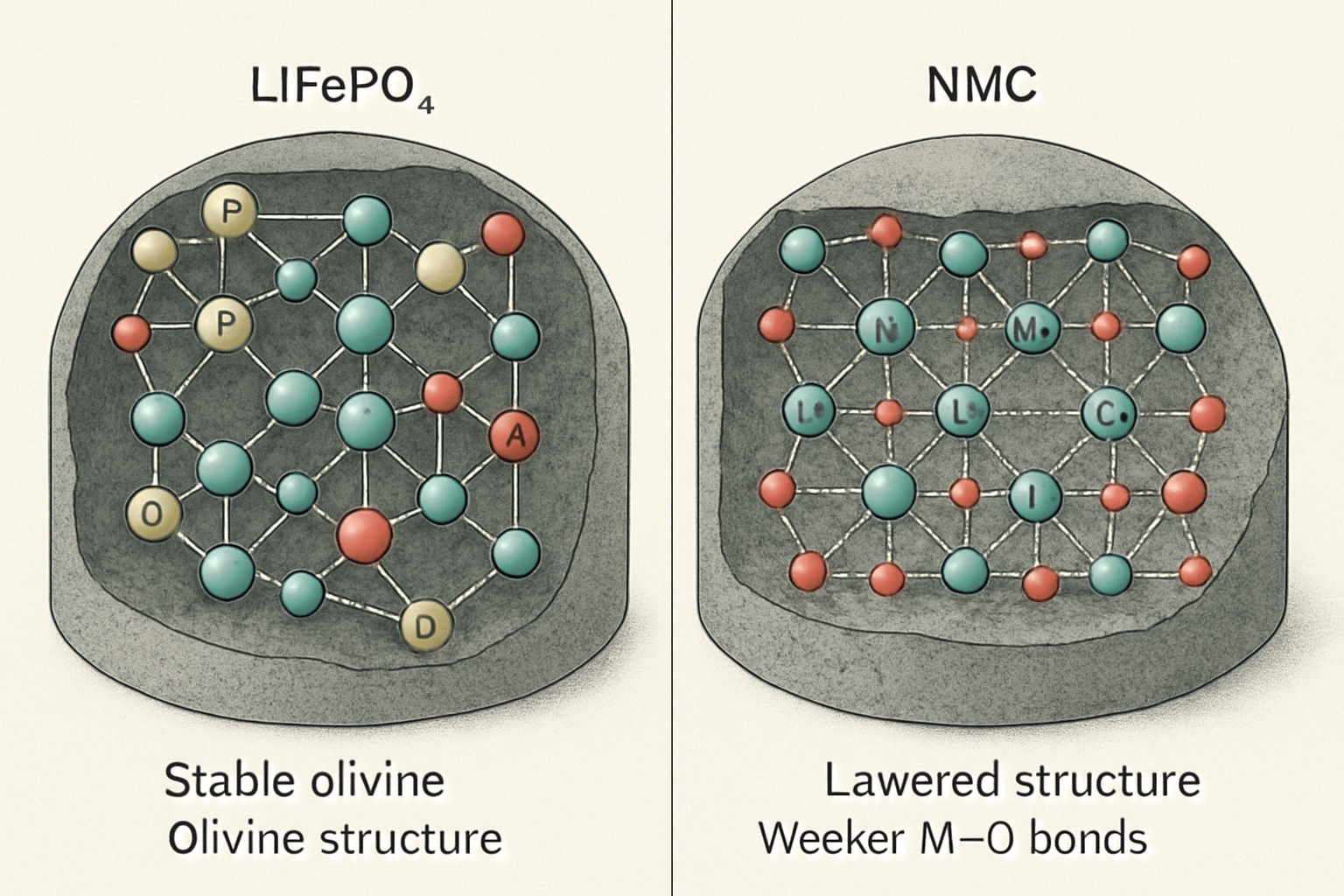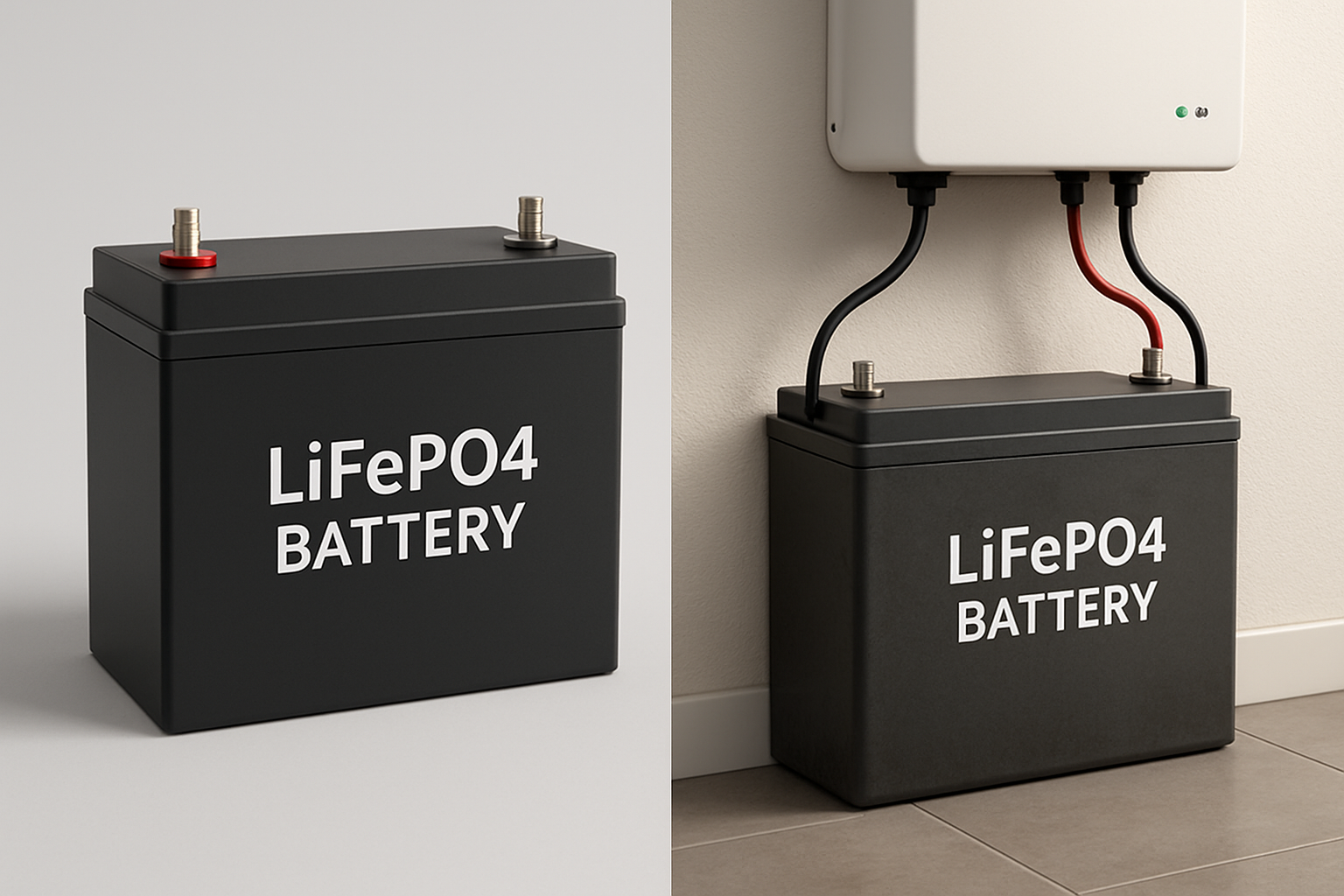As homeowners increasingly seek energy independence and resilience, home battery storage systems have become a cornerstone of modern energy management. The choice of battery chemistry is a critical decision that impacts safety, performance, and long-term value. Among the available options, Lithium Iron Phosphate (LiFePO4) has emerged as a superior technology, setting the standard for residential applications. Its unique combination of features makes it the clear frontrunner for the future of home energy storage.
1. Unparalleled Safety: The Foundation of Home Energy
For any system installed in a home, safety is non-negotiable. LiFePO4 batteries offer a level of safety that other lithium-ion chemistries struggle to match. This is not a minor detail; it is the most crucial advantage for a home battery storage system.
Chemical and Structural Stability
The core strength of LiFePO4 lies in its exceptionally stable chemical structure. The phosphorus-oxygen bond in the cathode is incredibly strong, preventing the release of oxygen that can lead to thermal runaway in other chemistries like Nickel Manganese Cobalt (NMC). This inherent stability means LiFePO4 batteries are far less prone to overheating and combustion, even if punctured or overcharged. Research from institutions like the U.S. Department of Energy continually emphasizes the importance of developing and deploying inherently safe battery chemistries for widespread adoption.
High Thermal Threshold
LiFePO4 batteries can operate safely at higher temperatures. The thermal runaway point for LiFePO4 is around 270°C (518°F), significantly higher than the approximate 210°C (410°F) for NMC batteries. This resilience reduces the risk of fire and minimizes the need for complex and costly cooling systems, adding another layer of reliability to your home energy system.
2. Exceptional Lifespan and Durability
A home battery is a long-term investment. LiFePO4 technology is built for longevity, delivering reliable performance for many years and ensuring a better return on your investment.
Extraordinary Cycle Count
Cycle life refers to the number of full charge and discharge cycles a battery can endure before its capacity significantly degrades. LiFePO4 batteries excel in this area, typically offering between 3,000 and 7,000 cycles. In contrast, many NMC batteries offer only 1,000 to 2,000 cycles. This extended lifespan means a LiFePO4 system can last for well over a decade, even with daily use.
| Battery Chemistry | Typical Cycle Life (to 80% Capacity) |
|---|---|
| LiFePO4 (LFP) | 3,000 - 7,000+ cycles |
| Nickel Manganese Cobalt (NMC) | 1,000 - 2,000 cycles |
| Lead-Acid | 300 - 700 cycles |
Slow Capacity Degradation
All batteries lose capacity over time, but LiFePO4 batteries degrade at a much slower rate. Their robust crystal structure withstands the physical stress of repeated charging and discharging, preserving more of its original capacity for longer. This ensures your system will meet your energy needs reliably for years to come.
3. A More Sustainable Battery Chemistry
As we move toward a cleaner energy future, the environmental and ethical impact of technology is more important than ever. LiFePO4 batteries offer a more responsible choice compared to many alternatives.
Cobalt-Free Design
A significant advantage of LiFePO4 is that its cathode is completely free of cobalt. Cobalt mining is often associated with severe environmental damage and unethical labor practices. By choosing a cobalt-free technology, you are supporting a more sustainable and ethical supply chain.
Abundant and Less Toxic Materials
The primary components of LiFePO4 batteries, iron and phosphate, are abundant, low-cost, and non-toxic. This reduces reliance on rare minerals and makes the batteries easier and safer to recycle at the end of their life.
4. Deeper Usable Capacity
Not all of a battery's rated capacity is actually usable. The Depth of Discharge (DoD) specifies the percentage of the battery that can be drained without causing damage. LiFePO4 technology allows you to safely access more of your stored energy.
Understanding Depth of Discharge (DoD)
LiFePO4 batteries can be regularly discharged to 90-100% of their capacity without significant degradation. Many other battery types, including lead-acid and some lithium-ion chemistries, recommend a DoD of only 50-80% to preserve their lifespan. This means a 10kWh LiFePO4 battery provides significantly more usable energy than a 10kWh battery with a lower DoD limit. Understanding key metrics like DoD is crucial for evaluating overall system value. A comprehensive look at solar storage performance shows how these factors directly impact your energy independence.
5. Favorable Long-Term Economics
While the initial purchase price is a factor, the true cost of a battery system is revealed over its lifetime. LiFePO4's durability and performance make it the most economically sound choice in the long run.
Lower Levelized Cost of Storage (LCOS)
LCOS measures the total cost of the battery divided by the total energy it delivers over its lifetime. Due to their vastly superior cycle life, LiFePO4 batteries deliver a much lower LCOS compared to other chemistries. Even if the upfront cost is slightly higher, the cost per kilowatt-hour stored and delivered is significantly less over time.
6. Consistent Performance in Any Climate
A home battery must perform reliably, regardless of the weather. LiFePO4 batteries demonstrate superior thermal stability, ensuring consistent operation across a wide range of temperatures.
Wide Operating Temperature Range
LiFePO4 batteries function efficiently in both hot and cold conditions, making them suitable for installations in various environments, from a hot garage in the summer to a cold basement in the winter. Their stability at high temperatures is a key advantage over NMC batteries, which are more susceptible to degradation in the heat.
7. High Efficiency and Power Delivery
An efficient battery system wastes less energy and delivers the power you need when you need it. LiFePO4 technology is designed for high-performance applications.
High Round-Trip Efficiency
Round-trip efficiency measures how much energy you get out of a battery for every unit of energy you put in. LiFePO4 batteries typically boast a round-trip efficiency of over 90%, meaning very little energy is lost during the charge and discharge processes. This ensures you get the most out of your stored solar energy.
Stable Power Output
LiFePO4 batteries can deliver a consistent voltage and handle high power draws without faltering. This is essential for starting large appliances like air conditioners or well pumps, providing the reliable power needed to run a modern home without compromise.
The Clear Choice for Modern Energy Independence
When all factors are considered, LiFePO4 technology stands out as the premier choice for home battery storage. Its superior safety, exceptional lifespan, environmental credentials, and strong long-term economic value provide homeowners with a reliable and intelligent path to energy independence. As the world transitions to renewable energy, LiFePO4 is not just an option; it is the future of residential energy storage. According to the International Renewable Energy Agency (IRENA), the demand for battery storage is set to expand significantly, with falling costs and safer chemistries like LiFePO4 leading the way.
Frequently Asked Questions
Is LiFePO4 more expensive than other lithium-ion batteries?
While the upfront cost of a LiFePO4 battery can sometimes be slightly higher than an NMC equivalent, its total cost of ownership is significantly lower. This is because its much longer cycle life means the cost per kWh delivered over the battery's lifetime is far less, making it a better long-term investment.
Can LiFePO4 batteries be used for off-grid solar systems?
Absolutely. LiFePO4 batteries are an excellent choice for off-grid solar solutions. Their long lifespan, high efficiency, deep depth of discharge, and durability make them perfectly suited for the daily cycling demands of an off-grid home, farm, or cabin.
How does temperature affect a LiFePO4 battery?
LiFePO4 batteries have a wide operating temperature range and are particularly stable at high temperatures. While extreme cold can temporarily reduce performance (as it does with all batteries), they generally perform better than many other lithium chemistries across diverse climates. It is always best to install batteries in a location that is protected from extreme temperature swings.





Leave a comment
All comments are moderated before being published.
This site is protected by hCaptcha and the hCaptcha Privacy Policy and Terms of Service apply.